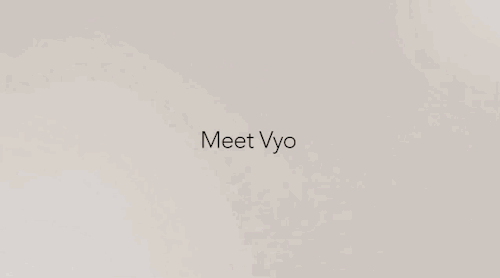Java 20 Predictions

Java 20 Predictions
More Posts from Stubborn-turtle-blog and Others








Samara ( New Designstudio at Airbnb ! ). Yoshino Cedar House. Yoshino. Japan. photos: Edward Caruso & Airbnb
Conceived as part of Kenya Hara’s House Vision exhibition in Tokyo, Japan. Co-created with Tokyo-based architect Go Hasegawa. Samara looked beyond a traditional model of home sharing, keeping in mind an entire community rather than an individual host. (more: Samara )

Really? You’re really going to say this?
First off: see this?

This is my masters’ degree in anthropology. I’d show you my BA, but it’s at my parents’ house. I’m three and a half years into a PhD in physical anthropology. I’ve been employed to do physical anthropology at one of the world’s best natural history museums. My area of study? Teeth and diets. I’m not here to argue veganism or vegetarianism, I’m here to tell you, point by point, why you’re devastatingly misinformed about our place in the primate family tree, along with my peer-reviewed sources behind the jump. I know we live in a “post-truth” society so maybe being presented with the overwhelming consensus of the scientists who currently work with this material is meaningless to you, and honestly, this probably isn’t going to make a bit of difference for you, but I can’t let this slide. Not in this house built on blood and honor. And teeth.
1. The evidence for being closely related to chimpanzees is vast and well-understood thanks to advances in DNA analysis. We share a huge amount of DNA with them, and not just repeating patterns in non-coding DNA. We have numerous genes that are identical and likely diverged around 7 million years ago, when Sahelanthropus tschadensis was roaming the earth. S. tschadensis was a woodland species with basal ape and basal human-line traits. The most notable was the positioning of the foramen magnum towards the central base of the skull and not emerging from the back suggests bipedality. This, along with other traits such as small canines worn at the tip, which implies a reduced or absent C/P3 honing complex (the diastema), suggests that this is actually a basal trait and the pronounced diastema we see in other species was a trait that came later. But more on that later- back to chimps and what we mean by sharing DNA. Our chromosomes and chimp chromosomes are structured far more like each other than other mammals. Furthermore, the genes located on these chromosomes are very similar. Chromosome 2, for instance, is nearly identical to two chimpanzee chromosomes. (Chromosome 2 in humans, Neanderthals, and Denisovans is different from Chromosome 2 found in apes and is actually the remnant of an ancient mutation where Chromosome 2 and 3 merged- you can see that from its vestigial centromeres and the genes found on it. We can’t get DNA from fossil material, but Neanderthal and Denisovan subfossils have demonstrated that this reduced chromosome count- we have one fewer pair than apes- is a typical trait of the Homo genus). Here’s a side by side comparison of Human and chimpanzee chromosomes.

Gene coding regions are colored- bands at the same place mean that there’s two identical genes at that locus. Our similarities to lemurs, on the other hand, aren’t on homologous chromosomes. We have similar coding around the centromeres but the genes express themselves differently. The structure of non-ape primate genes is also significantly different; when the first chromosomal comparisons were done between humans and lemurs back in the 1990s, it was discovered that lemurs have much more highly-concentrated heterochromatin at their centromeres, whereas the structure of human and chimpanzee centromeres is similar. The major differences in chimp and human DNA are in the noncoding regions; most of our genes have identical structures.
2. All primates evolved from a lemur-like organism, not just humans. Here’s one of them. I’ve seen her in person. Pretty cool, huh?

Her name is Ida and she’s a member of the genus Darwinius. But that’s just like saying all primates evolved from something that was basically a tree shrew- which is also true. See, one of the main points of evolution is that organisms are continually changing throughout time. We didn’t jump from lemur-like organism to human; changes were slow and gradual and the lineage isn’t really a straight tree. The fossil species we have and know lead to different lines branching out. Some things died off, some things flourished. Heck, look at the Miocene- twelve million years ago, there were hundreds of ape species. Now there’s twenty-three. (Sixteen gibbons, two chimp species, two gorilla species, two orangutan species, and one human species. There’s also some subspecies of gorilla and gibbon, but I’m only counting the primary species.) It’s hard to trace things back, but saying that we evolved from lemur-like species is obtuse and obfuscates the real point, which is that Homo and Pan descended from a relatively recent-in-the-grand-scheme-of-things common ancestor.
3. Our dentition is unique to the extant primates, but not australopithecines. Our teeth look very much like other members of the genus Homo, the extinct ones, as well as many of the australopithecines. We also have very similar enamel proportions to gracile australopithecines; apes have much thinner enamel overall.
But what did australopithecines eat?
Everything. We know they were eating fruits and nuts based on microwear analysis and strontium analysis, but we also know they were eating meat- and in pretty decent quantity, too. We’ve found all kinds of butchering sites dating back millions of years and in association with Australopithecus garhi, the earliest tool user, but we can also see this in tapeworm evolution. There’s many, many species of tapeworm in several genera. But three of them, in the genus Taenia, are only found in humans. And these species diverged from… carnivore tapeworms. Their closest relatives infect African carnivores like hyenas and wild dogs.

Tapeworms that are adapted to the specific gut of their host species need a certain environment, as well as a specific cycle of infection so that it can reproduce. A tapeworm that infects hyenas is going to be less successful if it somehow makes the jump to a horse. But if the hyena tapeworm was able to adapt to our gut, that suggests that our stomach was hospitable enough for them chemically to survive- which brings me to the intestines.
4. Our intestines are also unique. Yes, we have longer intestines than carnivores, but we also don’t have cecums like herbivores. We are omnivores and that means we still needed to retain the ability to digest plants.
The key to being omnivores is omni. All. I’m not saying we should only be eating meat, I’m saying our ancestors ate a varied diet that included all kinds of things. If we weren’t omnivores, why would we have lost the cecum’s function? Why is the human appendix only a reservoir for the lymphatic system, as it is in carnivores? The cecum is an extremely important organ in herbivores, as it houses the bacteria needed to break down cellulose and fully utilize fiber from leaves. But we don’t have that. Instead, we compensate with a long gut. Our ancestors absolutely did eat fruits and nuts and berries, but they also ate other stuff. Like scavenged carcasses and bugs and probably anything they could fit in their mouths. Which- actually, primate mouths are interesting. Humans and chimpanzees have enclosed oral cavities, thick tongues, and jaw angles much more like herbivores than carnivores- suggesting a herbivorous ancestor. That’s not something I’m arguing against at all. But again, we have adaptations for eating meat and processing animal protein because we are an extremely opportunistic species.
5. Our canines are true canines. First, semantics: having a diastema does not canine teeth make. We refer to the canine teeth by position- even herbivores, like horses, have them. They’re the teeth that come right after the incisors. All heterodonts have the potential same basic tooth types- incisors, canines, premolars, molars- in various combinations and arrangements. Some species don’t have one type of teeth, others don’t have any- but it’s silly to say that the canine teeth aren’t canine teeth just because they don’t serve the same function as a gorilla’s or a bear’s or some other animal’s. It’s basic derived versus primitive characteristics.
Now that we’ve got semantics out of the way, let’s talk about that diastema. The lost diastema is a derived trait, which means that our ancestors had it and we lost it over time. All other extant non-Homo primates have a canine diastema. All of them. However, when you look at australopithecines, we see that many of them either don’t have it or have it in a reduced capacity. At the earliest known hominin site, Lukeino, we see Orrorin tugenensis with reduced canines compared to ape fossils and modern apes- and… you do know that apes don’t use their canines for eating meat, right? Like, primate canines serve a very different purpose than carnivorans’ canines. It’s suggested that the large canines are for social display moreso than anything dietary- bigger, more threatening teeth are useful if you’re a gorilla or chimpanzee fighting to the top of your group’s social structure.
I’m going to refer you to a blog post written by Dr. John Hawks, a good friend of my advisor and generally a pretty cool guy. He’s got a nice writeup on the evolution of hominin teeth and how the human line’s teeth have changed through time.
Also, of course our teeth are going to be smaller. When we compare archaic Homo sapiens fossils to modern skeletons, their teeth and jaws are much more robust. This is likely related to the introduction of soft foods- and by soft, I mean cooked grain mush- to the diet around the time of domestication, right before the population explosion that happened about 10k years ago. In general, post-domestication human jaws are much smaller and more crowded than any other humans and hominins that came before.
6: Neanderthals did die out, but not in a catastrophic event like we think of with dinosaurs. While there are no living Neanderthals today that we would classify as Homo neanderthalensis, there is plenty of evidence that we interbred and likely outcompeted them as a species due to our overwhelmingly large population size (hypothesized based on number and locations of remains found). While there’s only a small percentage of Neanderthal mitochondrial DNA lines in human populations today, it’s quite likely we lost a lot of that due to genetic drift and population migration- Neanderthals, after all, had a much more limited range than Homo sapiens sapiens. Their eventual extinction is a mosaic of events- outcompetition plus assimilation. The line between Homo sapiens sapiens and Homo neanderthalensis/Homo sapiens neanderthalensis is blurry- there’s some physical anthropologists who actually think we should be including them within our species as a subspecies- but they are extinct in that the specific subset of hominins with distinct karyotypes and potential phenotypes no longer exists.
And if you don’t know, now you know.
Keep reading
USADance (and I’m assuming the national organizations for other countries) still do this! The local chapters have to hold dances, and at least one of those a year has to be a formal: http://usadance.org/chapters/find-a-local-chapter/
You know what I wish we still had? Balls.
Like formal balls from fairytails. Instead of going to a club or a bar, you would go to a ballroom. There’d be music and dancing, and everyone could wear fancy clothes. There could be masquerades, where you could meet new people and reveal your real identity at the end of the night. There could be gay/lesbian balls and gothic balls and space fantasy balls. Just, formal balls.
OMG, so pretty










Stunning Bionic Insects Built From Computer Circuit Boards
UK-based artist Julie Alice Chappell (previously featured here) constructs stunning sculptures of insects with parts of vintage computers and video game systems for her taxonomic collection, called “Computer Component Bugs”. Using parts of Nintendo’s and DVD players, Chappell hopes to raise awareness of environmental waste.
Chappell’s goal is to create an aesthetically beautiful creation, which also offers a socio-political discourse on the reclaimed waste and the destruction of the natural world with art. Chappell’s bionic insects can be found on Etsy shop!
View similar posts here!
How To Be A Troll, And Win Wars
Under Sun Pin’s direction the Ch’i armies, which were advancing into Wei, followed the dictum “Be deceptive.”
P’ang Chüan arrogantly believed the men of Ch’i to be cowards who would flee rather than engage mighty Wei in battle. Therefore, Sun Pin daily reduced the number of cooking fires in the encampment to create a facade of every-increasing desertion. He also effected a tactical withdrawal to further entice P’ang Chüan into the favorable terrain at Ma-ling where the Ch’i commander concealed ten thousand crossbowman among the hills.
P’ang Chüan, apparently afraid that he would miss an opportunity to inflict a severe blow on the retreating Ch’i army, abandoned his heavy forces and supply train and rushed forth with only light units. Arriving at night, the combined Wei forces were ambushed as soon as they penetrated the killing zone.
In addition to being decisively defeated by Ch’i’s withering crossbow fire, 100,000 Wei soldiers needlessly perished because of their commander’s character flaws and hasty judgement.
The battle of Ma-ling is apparently the first recorded conflict in which crossbows were employed. The quote is taken from “Evolution of Conflicts and Weapons in China” in The Art of War by Sun Tzu.

This is the Bandigara Escarpment, in Mali. Although the cliffs have been inhabited since the 200s BCE, the present inhabitatants, the Dogon, have been in the rock-perched houses since the 1300s CE. The cliffs offer protection, cooler air, and a safe place to bury the dead. The valley below is prone to flash floods. This means building houses there, and burying dead there, is a risky proposition. The Dogon decided the risk was not worth it, and drove out the former inhabitants of the Bandigara Escarpment. Since the 1300s they have lived at Bandigara in relative peace.
-
 stubborn-turtle-blog reblogged this · 8 years ago
stubborn-turtle-blog reblogged this · 8 years ago -
 angrycloudpersona liked this · 9 years ago
angrycloudpersona liked this · 9 years ago -
 blueishnet-blog liked this · 9 years ago
blueishnet-blog liked this · 9 years ago -
 blueishnet-blog reblogged this · 9 years ago
blueishnet-blog reblogged this · 9 years ago -
 atlanteandoveclam reblogged this · 9 years ago
atlanteandoveclam reblogged this · 9 years ago -
 haythamkenwagron-blog liked this · 9 years ago
haythamkenwagron-blog liked this · 9 years ago -
 buzzinggeek-blog liked this · 9 years ago
buzzinggeek-blog liked this · 9 years ago -
 elegantelephantsuniverse-blog liked this · 9 years ago
elegantelephantsuniverse-blog liked this · 9 years ago -
 jeod-longshanks-blog liked this · 9 years ago
jeod-longshanks-blog liked this · 9 years ago -
 heksenv liked this · 9 years ago
heksenv liked this · 9 years ago -
 techstuffed reblogged this · 9 years ago
techstuffed reblogged this · 9 years ago
Gaming, Science, History, Feminism, and all other manners of geekery. Also a lot of dance
243 posts







